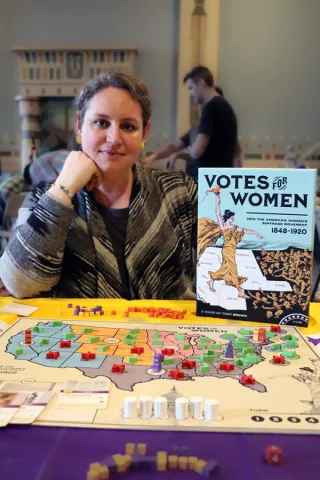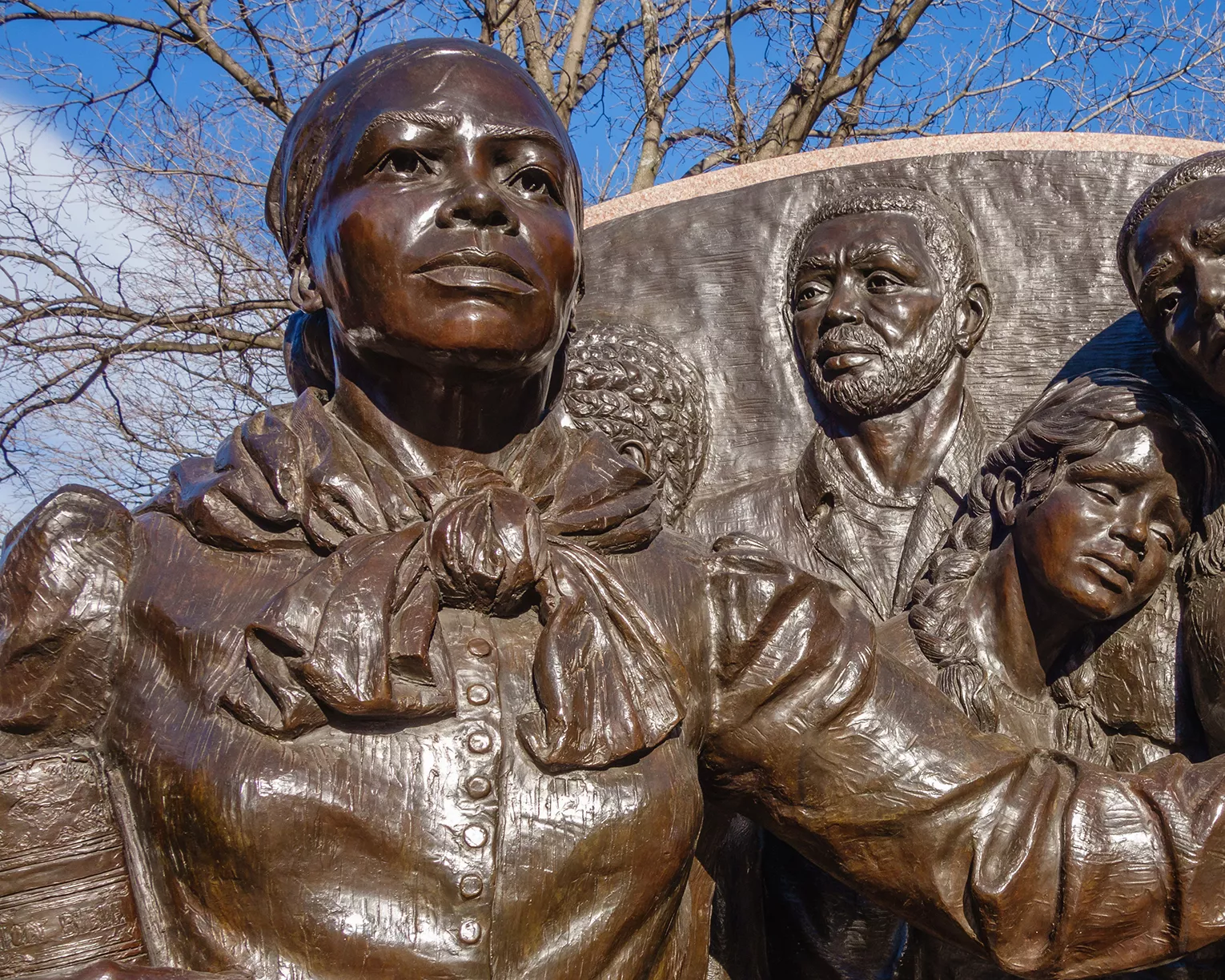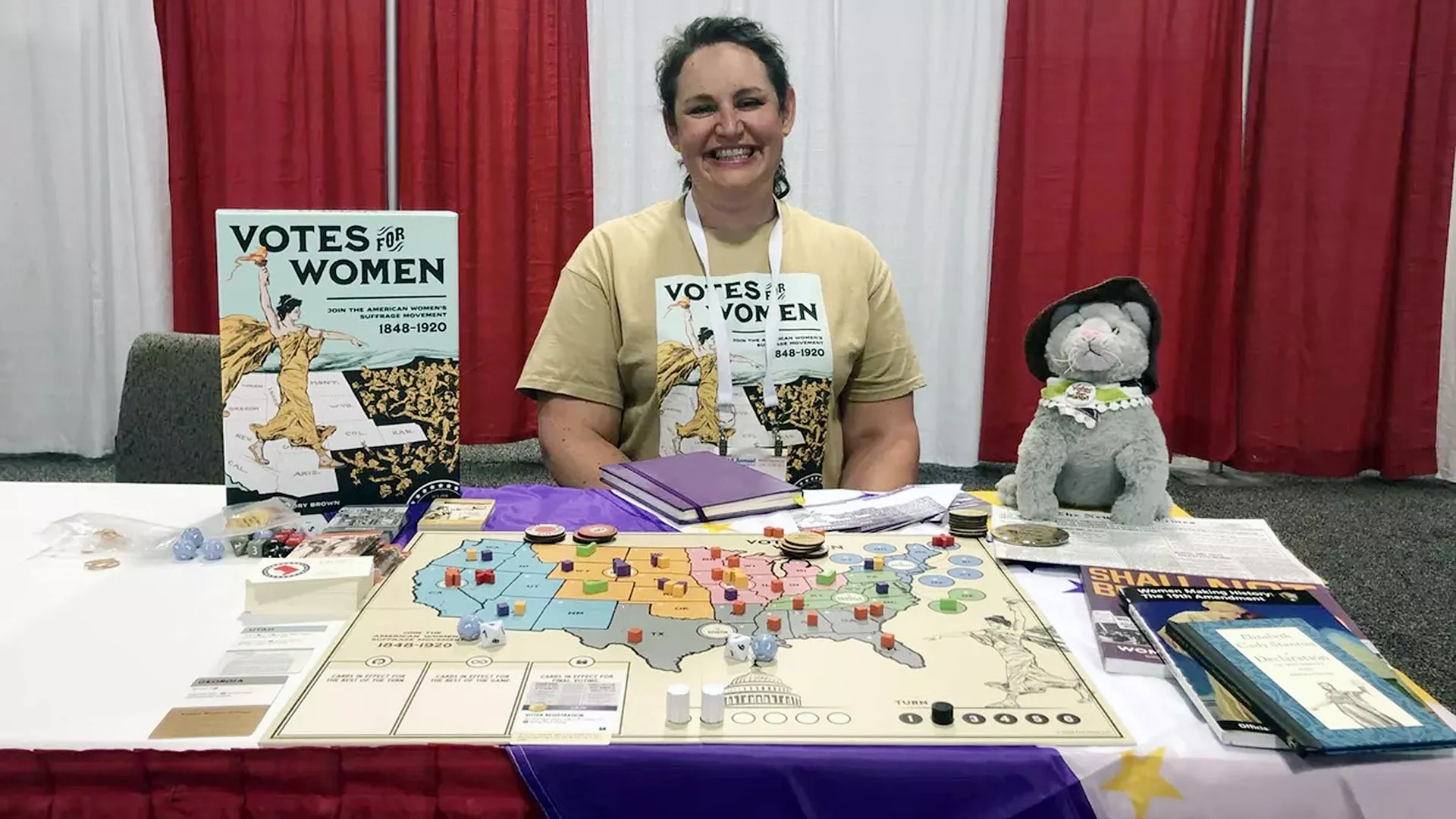Learning can be more enjoyable when it’s fun, interactive, and even a bit competitive.
Now students (and you!) can learn a lot more about how the 19th Amendment was ratified in an entertaining new game called Votes for Women.
The game has been named one of the best board games of the year by Polygon, one of “The Best New Board Games and Tabletop Games of 2023 (So Far)” by Vulture, was a 2022 Golden Geek Best Wargame Nominee, and a 2022 Golden Geek Best Thematic Board Game Nominee.
According to Fort Circle Games, Votes for Women includes a deck of more than 100 cards that “feature period art, portraiture, and historic documents,” and more.
Tory Brown, a member of the NEA communications team, is the creator of the game.
NEA Today spoke with Brown to learn more about Votes for Women.

How did you get the idea to create the game Votes for Women?
TB: I think the idea came in August of 2019. I read a news article about how 2020 would be the suffrage centennial.
I have a friend who is a game publisher and was asking if anyone had any game design ideas. Thinking about the suffrage movement, the idea was born to take this cultural moment that we were about to celebrate and "gamify” it, so people could not just learn and experience it but play and reenact the events.
Are you particularly interested in or passionate about women’s suffrage or women’s history?
TB: I’m passionate about movement-building in general, and I think that the suffrage movement is one of the most inspiring, effective, successful movements in American history.
I want to show people how powerful we are when we get together to create change and how we have successfully done so in the past. The hope is to inspire others to build or join a movement and change our future. The work of bringing people together to create positive change is what brought me to NEA and it’s what my whole career is built around.
How is the game played?
In the game, there are two sides: the Suffragist player and the Opposition player. Players can play competitively against each other, cooperatively on the same side together, and solo against the Oppobot.
The game is played out over a U.S. map of 48 states because there were only 48 states in 1920 when the 19th Amendment was ratified.
Suffrage moves from the state of New York to other states and to other regions of the country through campaigning, organizing, and building up power across the states. The first card you play as the opposition player is called Patriarchy, which reflects the inherent opposition to women's suffrage, the existing disenfranchisement of women, and restrictions on women's citizenship at that time.
The Suffragist player’s goal is to have three-fourths of the states ratify the 19th Amendment after getting Congress to pass it, while the Opposition player’s goal is to get at least 13 states to reject the Amendment or by getting Congress to reject the proposed Amendment.
There are six turns in the game. If by the end of the sixth turn the amendment hasn’t been sent for ratification to the states, then the Opposition side wins. If neither side has won by the end of the sixth turn, the game goes to Final Voting where the Suffragist player and the Opposition player take turns picking states to vote on the amendment, according to the game instructions.
Do you hope that the game is used for fun, for education, or both?
TB: Yes, for both! If a game isn’t fun, no one will learn anything from it because they won’t want to play it.
None of the interesting, cool, and informative aspects of the game are going to be absorbed if it's boring. So I'd say entertaining first, educational as a bonus.
What is it like playing Votes for Women with others?
TB: I played a lot of Votes for Women with others. I've taught it to people at some in-store demonstratings and have played with some friends.
Teaching and watching people play my game is thrilling! It must be what it's like when an author sees someone reading their book or when a TV writer sees people talking about their show on Twitter.
Do you have plans to create another game?
TB: Yes, I'm thinking about the next one. I've had a few thoughts about the environmental movement. I also think the labor movement is so full of stories and heroes and setbacks and advances, and we just would not have the kind of country we have without the labor movement.
NEA members know better than anyone that when we stand together, we can do amazing things.
How can educators use games like Votes for Women in the classroom?
TB: I know that today's educators are looking for ways that engage students, that confront the challenges kids in our nation face, and that ease the pressures of preparing for an unknown future.
Teachers are doing incredible work in meeting students where they are, and I hope that play and games that educate and motivate are a part of very tough decisions about how to build curriculum and deliver our students to the next grade and into what is and will be a successful future.



